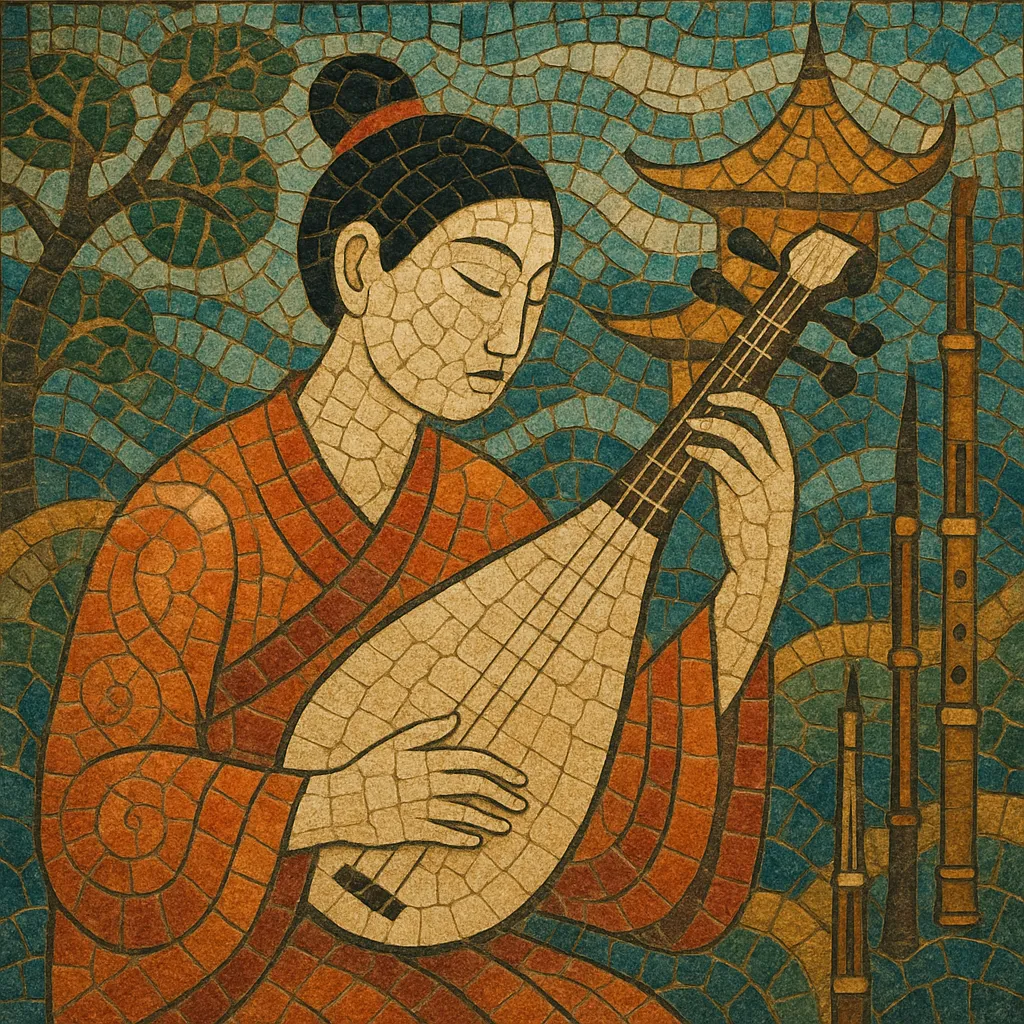East Asian music is an umbrella term for the traditional art, court, ritual, and folk musics of China, Japan, Korea, and neighboring cultures. While locally diverse, these traditions share broad aesthetic features such as pentatonic and heptatonic modal systems, heterophonic textures, flexible rhythm organized in cycles, and a refined focus on timbre, ornamentation, and silence.
Typical instruments include Chinese zithers (qin/guqin, zheng/guzheng), lutes (pipa, ruan), fiddles (erhu), flutes (dizi, xiao) and mouth organs (sheng); Japanese mouth organ (shō), double-reed (hichiriki), transverse flute (ryuteki), lutes (biwa), and koto; and Korean zither family (gayageum, geomungo), fiddle (haegeum), transverse flute (daegeum), and oboe (piri). Court forms such as gagaku (Japan), yayue (China), and aak (Korea) exemplify ceremonial grandeur, while folk and theatrical genres emphasize narrative singing, dance, and regional languages and dialects.
Across these cultures, music is deeply linked with philosophy and ritual—Confucian ideas of moral cultivation, Buddhist liturgy and chant, and indigenous concepts like Japan’s ma (meaningful silence) and jo–ha–kyū (formal pacing) shape both composition and performance.
Documented musical thought in East Asia dates back to ancient China (Zhou and Han eras), where theories of pitch (the lülü system) and modal categories (gong, shang, jue, zhi, yu) were codified. Music functioned as statecraft and ritual, aligning cosmic order with governance.
During the Tang dynasty (600s–900s), Silk Road exchange brought Central and West Asian instruments and aesthetics into Chinese courts, which in turn influenced Korea and Japan. Japan’s Nara/Heian courts formalized gagaku (court music) and bugaku (court dance), while Korea maintained and adapted Chinese-derived ritual repertoires (aak) alongside native hyangak and tangak.
Across the Song–Qing dynasties in China and the Goryeo–Joseon periods in Korea, court repertoires, Buddhist/Taoist liturgies, and literati zither traditions (qin/guqin) matured. Parallel to elite traditions, regional folk song, narrative epic, and theater (e.g., Chinese qu/operatic forms; Japanese nō and later kabuki; Korean pansori) flourished, developing distinctive vocal timbres, ornamentation, and rhythmic cycles.
The 19th–20th centuries brought modernization, conservatories, and new instruments/ensembles modeled on Western orchestras, alongside preservation efforts for court and folk traditions. Post–World War II, national ensembles, scholarly editions, and recordings stabilized repertories. In recent decades, traditional East Asian musics have influenced global composition, film, ambient, and experimental scenes, while contemporary artists fuse ancient instruments and modes with jazz, pop, and electronic idioms.


